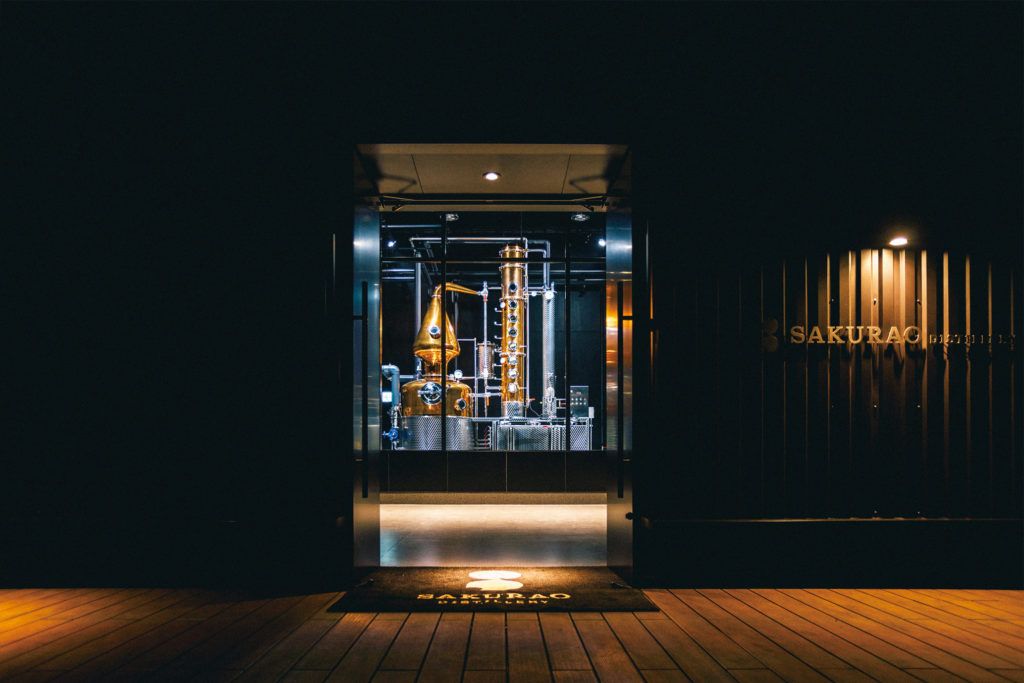Get acquainted with the botanicals of Japanese gin

There’s no denying Japan was ready for a craft gin takeover.
“Although gin had been very familiar in the bar community for several decades, it had only really been thought of as a workhorse cocktail ingredient. It took the emergence of the new wave of crafted gins to change perceptions,” says David Croll, one of the founders of Ki no Bi in Kyoto, the first artisan gin to be released in Japan.
“In the past, gin had the image of getting drunk cheaply. But this has changed with the emergence of craft gin, manufactured with great care and selected ingredients,” says Ayana Yamane of Sakurao Distillery in Hiroshima.

Gin is made in two stages: first, a neutral base spirit is prepared. Then, this base is re-distilled with botanicals, a blank canvas for flavor and terroir – as long as juniper is the predominant aroma.
In Japan, this base is most often shochu, an ancient Japanese liquor made by distilling potatoes, barley, soba, rice, koji or black sugar. Many of the craft gins on the market now in Japan are produced shochu or sake breweries, who draw on their long history of knowledge of process and palate.
“Japan has always had a culture of distilled spirits, which made it open for foreign distilled spirits,” says Kashiwagi, a sales representative for Kozue gin, from Wakayama prefecture.

This second stage is a playground for terroir.
“Compared to other spirits, there are fewer restrictions on raw materials, so it’s easy to express the individuality of each distillery,” says Ayana.
“We wanted to express Hiroshima itself,” says Ayama. Sakurao Distillery have two gins on the market, Original and a limited release. The original comprises nine botanicals from Hiroshima – a mixture of citrus, hinoki timber, green tea, red shiso, and five foreign botanicals. The Limited uses only Hiroshima botanicals – adding cherry blossom, local juniper berries, kuromoji, kinobi, oyster, wasabi, juniper leaf, shiso.
Kozue is the first gin to use local koyamaki (Japanese umbrella pine), which is typically used for flower arrangements, in gardens, and as an aroma for soaps and essential oils
“We wanted to release a product based on koyamaki, so explored the various uses of it, such as immersing the pine needles in umeshu or sake. When immersed in spirits, similar to Zubrowka, we discovered the result was like gin. Koyamaki contains a large amount of the main flavor component of juniper berries (Alpha-pinene), so we decided to make Wakayama’s first craft gin.”
“The kanji symbol for Kozue means ‘pine needles.’ By drinking Kozue, you can imagine the scenery of Wakayama prefecture,” says Kashiwagi.
And not only is Japan ready for craft gin, but the world also waits with welcome arms for the gin coming out of Japan.
“The reputation of Japanese spirits is already very high thanks to the precedent set by whiskey,” says David.
“With the shortage of Japanese whiskey, we can fill the gap. Also, unlike sake and shochu, it is a beverage already widely familiar with foreign markets.”
Through gin, as Kashiwagi says, people can feel the characteristics of not just Japan, but the different regions of Japan.
Japanese Gin Botanicals
Awa bancha – a dark tea local to the Tokushima and Kagawa Prefectures in the Shikoku region. The tea leaves are boiled, then fermented for 7-10 days, which gives the brew a slightly sour taste.
Cherry blossom flower – not like cherry in flavor, but strongly floral and quite musky.
Cherry blossom leaves – these have a herbal taste with a cinnamon-like angle.
Citrus (shekwasar, Mikan, komasa, sudachi, hyuganatsu, kinkan, hebesu, daidai, yuzu) – Japan’s native citrus bounty.
Gyoroku – like matcha, gyoroku is shaded for three weeks, making it one of the most premium on the market. Its leaves are a deep green, with a flavor even more seaweedy than sencha, and has a mellow, sweet and full-bodied taste. Shade gives sweetness and umami to the tea.
Hinoki – hinoki is the creamy, elegant timber used for the baths of onsen, for building shrines and temples, sushi restaurant interiors. It has a woody, piney aroma.
Hojicha – green tea that has been roasted. This tea has a toasty, nutty, earthy, caramel-like flavor.
Kinome – the leaves of the sansho pepper plant. These have a crisp flavor and sharp, spicy taste.
Koyamaki (Japanese Umbrella pine) – a conifer unique to Japan. The pine needles infuse gin with a woody, green, piney, and slightly minty element.
Kuromoji – a native bay tree that is used in Japanese traditional medicine for a long time.
Kombu – Kombu, or kelp, has ocean-rich flavor, a little salty and boosts umami.
Oyster shells – crushed up oyster shells bring a mineral touch to gin.
Sansho – tiny peppercorns that pack a herbaceous, pungent punch. They have a cold heat similar to wasabi.
Shiso – both green and red shiso leaves are used in gin. Shiso is in the basil family, so has a similar sweet and aniseed flavor profile.
Tencha – this tea is made from unground tea leaves used for matcha, and has a subtle, elegant flavor profile and lingering aroma. High leaves of theanine make it smooth and mellow.
Wasabi – fresh wasabi has a distinctly grassy, herbal flavor, as well as creamy and sweet characteristics.

